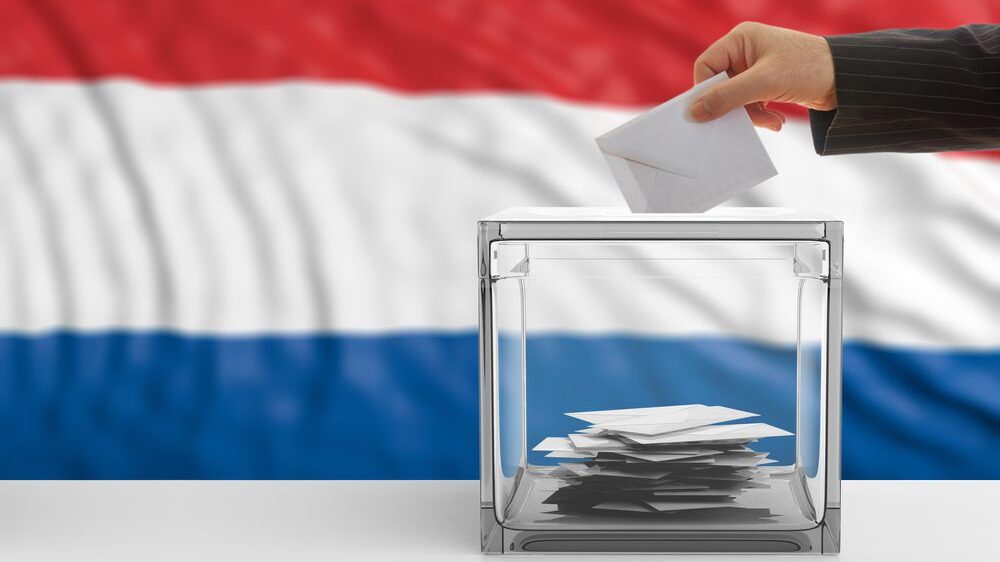
Following Friday’s breakup of Dutch Prime Minister Mark Rutte’s coalition government (his fourth in his ten-year tenure as PM), Rutte met with the king at the royal Huis ten Bosch palace near the Hague around 1 pm on Saturday, July 8th.
The 56-year-old tendered his entire cabinet’s resignation to King Willem-Alexander, who had cut short his holiday in Greece to receive his outgoing PM.
Rutte komt aan met de auto bij de Koning. #ontslag #kabinetRuttIV pic.twitter.com/AVIwd9nKFC
— floor bremer (@floorbremer) July 8, 2023
Having explained to the King how irreconcilable differences of opinion on putting a curb on the influx of asylum seekers had cost his government its cohesion, Rutte left about an hour and a half later, telling reporters through his open car window car that it was a “good discussion” but that he was “not saying anything else because these discussions are confidential.”
After Rutte’s press conference last night, Deputy Prime Minister and chairwoman of D66 Sigrid Kaag, called the fall of his cabinet “regrettable,” but pointed out that the decision had been made by all four parties.
Mijn reactie op de val van het kabinet. pic.twitter.com/pYiG1YupJL
— Sigrid Kaag (@SigridKaag) July 7, 2023
Rutte will now be leading a caretaker government until elections, expected to be held in mid-November this year.
Upon the announcement, both coalition (CDA, VVD, ChristenUnie, and D66) and, with particular enthusiasm, opposition parties launched themselves in campaign mode.
“The campaign has begun!” wrote BoerBurgerBewegering (BBB) chairwoman Caroline van der Plas, whose fledgling agrarian populist party (which gained mass support due to its opposition to EU-backed environmental rules) sent shockwaves through the Netherlands last March, coming in first in its regional elections.
De campagne is begonnen! Onze kiezers hangen overal BBB-vlaggen op en de NL vlag weer recht. Kreeg dit filmpje zojuist… Boeren zijn daar druk geweest #nieuweverkiezingen 🙏💚 pic.twitter.com/h5ImtpCHId
— Caroline van der Plas (@lientje1967) July 7, 2023
Speaking to RTL Nieuws, van der Plas said her party was ready for new elections, which it had “proven in recent times.” When asked whether she would consider the premiership, she commented: “Not necessarily, but if it comes down to it I will not turn it down either.”
Van der Plas also stated she refused to serve in a coalition led by Rutte. Should her party perform well enough to warrant a spot in a coalition, Rutte’s VVD could be tempted to ditch him to deliver a leader of that new government.
Geert Wilders of the one-man nationalist PVV (Partij voor de Vrijheid) meanwhile urged his supporters to vote for his party as he promised “fewer asylum seekers and crime, more money and homes for our own people, decent healthcare,” and ample room for our farmers and fishermen [to do their work]!”
Lieve mensen we kunnen van NL weer een prachtig land maken met minder asielzoekers en criminaliteit, meer geld en huizen voor onze eigen mensen, een fatsoenlijke zorg, ruim baan voor onze boeren en vissers!
— Geert Wilders (@geertwilderspvv) July 8, 2023
Nederlanders weer op 1!
Dus ga stemmen en maak de #PVV héél groot! ❤️❤️
After the election, Wilders said he would be willing to work with Rutte’s VVD party.
For now, its leader, Sophie Hermans, is ruling out any cooperation between the two.
“I do not see that happening,” she said, since according to her, the PVV’s proposals for an asylum policy do not at all match those of the VVD. “He wants to get [asylum seekers] out of Europe, and that no one should come here at all,” she said.
For Rutte, whose famed staying power in Dutch politics had earned him the nickname ‘Teflon Mark’, things look shaky.
Not only is he facing a strong challenge from both the BBB and the PVV, but his own party is reportedly already contemplating his successor.
As reported by RTL Nieuws, Rutte would still run as a candidate, as he “still had the energy” to do so.
Rutte: 'Ik heb de energie om door te gaan als lijsttrekker' | Liveblog https://t.co/bs5oLrMebf pic.twitter.com/fmAl2rBwjU
— RTL Nieuws (@RTLnieuws) July 7, 2023
The current political instability in the Netherlands, whose government has been a staunch ally of Ukraine in its fight against Russia, prompted a call from Ukrainian President Volodymyr Zelensky to Rutte.
On Twitter, the Ukrainian leader said he had expressed his support “at a difficult political moment,” having thanked Rutte “for the steadfast principled stand of the Netherlands.”
Had another phone call from Türkiye – with the Prime Minister of the Netherlands @MinPres.
— Володимир Зеленський (@ZelenskyyUa) July 8, 2023
I expressed support at a difficult political moment.
I thanked for the steadfast principled stand of the Netherlands regarding the Russian invasion and for recognizing the Holodomor as…
In that talk, he continued, “Defense cooperation was discussed,” and dates for starting the training [by the Netherlands] of Ukrainian F-16 pilots were set.
Rather cryptically, he added that they had also “coordinated positions” ahead of the NATO summit in Vilnius next week, where Ukraine is expected to press for its rapid accession into the military alliance.
